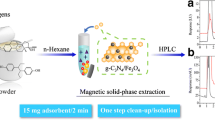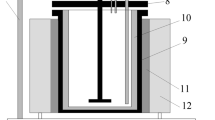Abstract
Foam fractionation is a promising method for separation and concentration of biochemicals. It is simple, easily scalable, inexpensive, and environment friendly. Foam fractionation thus represents an alternative to the traditional methods used for immunoglobulin enrichment. However, little, if any, literature exists documenting the utilization of foam fractionation in the enrichment of immunoglobulins. Milk were utilized as an immunoglobulin source to serve as examples of a real system in this study. The investigation examined the effects of varying five different process parameters: the initial pH value, the initial concentration of immunoglobulin, the nitrogen flow rate, the column height, and the foaming time. Experimental results demonstrated that immunoglobulin could effectively be enriched from milk by foam fractionation. The maximum enrichment ratio with pretreatment (using pH 4.6 precipitation) was 6.30 along with a more than 92 % recovery for IgG and an enrichment ratio of 5.1 with 85 % recovery for IgM.







Similar content being viewed by others
References
Hilpert, H., Brussow, H., & Mietens, C. (1987). Use of bovine milk concentrate containing antibody to rotavirus to treat rotavirus gastroenteritis in infants. Journal of Infectious Diseases, 156(1), 158–166.
Zeitlin, L., Cone, R. A., Moench, T. R., & Whaley, K. J. (2000). Preventing infectious disease with passive immunization. Microbes and Infection, 2(6), 701–708.
Lilius, E. M., & Marnila, P. (2001). The role of colostral antibodies in prevention of microbial infections. Current Opinion in Infectious Diseases, 14(3), 295–300.
Kelly, G. S. (2003). Bovine colostrums: a review of clinical uses. Alternative Medicine Review, 8(4), 378–394.
Stephan, W., Dichtelmuller, H., & Lissner, R. (1990). Antibodies from colostrum in oral immunotherapy. Journal of Clinical Chemistry and Clinical Biochemistry, 28(1), 19–23.
Donovan, S. M., & Odle, J. (1994). Growth factors in milk as mediators of infant development. Annual Review of Nutrition, 14, 147–167.
Korhonen, H. (1998). Colostrum immunoglobulins and the complement system-potential ingredients of functional foods. Bulletin of the International Dairy Federation, 336, 36–40.
Birch, J. R., & Racher, A. J. (2006). Antibody production. Advanced Drug Delivery Reviews, 58, 671–685.
Holschuh, K., & Schwammle, A. (2005). Preparative purification of antibodies with protein A-an alternative to conventional chromatography. Journal of Magnetism and Magnetic Materials, 293, 345–348.
Ahmad, S. I. (1975). Laws of foam fractionation I. The effect of different operating parameters on the foam fractionation of albumin from a solution containing organic and inorganic materials. Separation Science and Technology, 10(6), 673–688.
Uraizee, F., & Narsimhan, G. (1996). Effects of kinetics of adsorption and coalescence on continuous foam concentration of proteins: comparison of experimental results with model predictions. Biotechnology and Bioengineering, 51(4), 384–398.
Robertson, G. H., & Vermeulen, T. (1969). Foam fractionation of rare health elements. Lawrence Livermore Lab. [Rep.] UCRL-19525.
Maas, K. (1974). Adsorptive bubble separation techniques. In F. Korte (Ed.), Methodicum chimicum (Vol. 1, pp. 165–171). New York: Academic Press.
Grieves, R. B. (1975). Foam separations: a review. Chemical Engineering Journal, 9(2), 93–106.
London, M., Cohen, M., & Hudson, P. B. (1954). Some general characteristics of enzyme foam fractionation. Biochimica et Biophysica Acta, 13, 111–120.
Varley, J., & Ball S. K. (1994). In: D. L. Pyle (Ed.), Foam separation for enzyme recovery: Maintenance of activity (pp. 525–531). Sep. Biotechnol. 3. Cambridge: University of Reading.
Grieves, R. B., & Bhattacharyya, D. (1970). Foam fractionation rates. Separation Science, 5, 583–601.
Kishimoto, H. (1962). Foam separation of surface-active substances. Kolloid-Zeitschrift & Zeitschrift für Polymere, 192(1–2), 66–101.
Schnepf, R. W., & Gaden, E. L. (1959). Foam fractionation of proteins—concentration of aqueous solutions of bovine serum albumin. Biotechnology and Bioengineering, 1(1), 1–11.
Author information
Authors and Affiliations
Corresponding author
Rights and permissions
About this article
Cite this article
Chen, YC., Parlar, H. Parametric Study on the Enrichment of Immunoglobulin from Milk by Foam Fractionation. Appl Biochem Biotechnol 170, 1589–1601 (2013). https://doi.org/10.1007/s12010-013-0272-5
Received:
Accepted:
Published:
Issue Date:
DOI: https://doi.org/10.1007/s12010-013-0272-5




